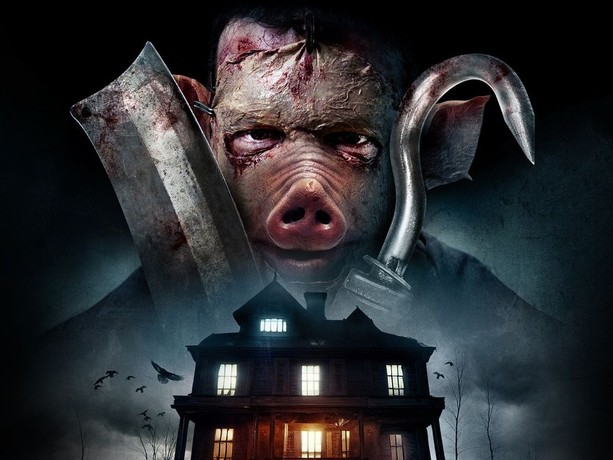Slaughterhouse on the Hill – Where the Past Still Screams
Slaughterhouse on the Hill is a visceral, blood-soaked horror film that plunges into rural terror and the darkest corners of human cruelty. Set in an isolated countryside, the film weaves a grim tale of family secrets, madness, and relentless violence. It’s a throwback to grindhouse-style horror — gritty, brutal, and unapologetically savage — a film that feels like a collision between The Texas Chain Saw Massacre and Wrong Turn, with a psychological edge.
The story centers on a group of young travelers who veer off course during a road trip and end up stranded in a forgotten farming community. Their car breaks down near a decaying, abandoned slaughterhouse perched ominously on a remote hill. Desperate for help, they explore the property, only to find it suspiciously well-preserved — as if it’s not as abandoned as it seems.
Unbeknownst to them, the slaughterhouse holds a gruesome history. Decades earlier, it was shut down after reports of disappearances and horrific abuse came to light. But the truth was buried, and the property passed into the hands of a twisted family who never left. The patriarch, once the slaughterhouse's head butcher, raised his children in complete isolation, teaching them that outsiders are nothing more than livestock — and trespassers are meat.

What follows is a slow-burning descent into madness. The travelers are stalked, captured, and dragged into the bowels of the slaughterhouse, where rusted hooks, blood-stained tools, and rotting carcasses tell their own horrific story. The killers — a disfigured clan of siblings led by the silent, monstrous figure known only as Boarhead — are relentless. Wearing bloodied aprons and grotesque masks made from animal hides and bone, they turn the slaughterhouse into a dungeon of primal horror.
Director Claire Renner delivers a gritty, stylized film soaked in atmosphere and dread. The cinematography emphasizes decay and isolation — peeling paint, rusted metal, and blood-streaked walls dominate the visual palette. The film uses practical effects and makeup to deliver brutal kill scenes with stomach-churning realism. It avoids cheap jump scares in favor of sustained tension and claustrophobic terror.
Beyond the gore, Slaughterhouse on the Hill explores deeper themes of inherited violence and the horrors of generational trauma. Flashbacks reveal the warped upbringing of the killers, who were brainwashed into continuing the family’s “butchering tradition.” The film becomes not just a survival horror but a grim meditation on what happens when humanity is stripped away and replaced with ritualized brutality.

The final act is a frantic, desperate attempt at escape, with one or two survivors turning the tools of the slaughterhouse against their captors. Blood flows, secrets are unearthed, and the past screams from the walls. The ending is bleak but fitting, leaving the audience with a haunting image of the hilltop house — still standing, still watching, still waiting.
In conclusion, Slaughterhouse on the Hill is a chilling ride into rural hell — a horror film that doesn’t hold back on intensity or violence. It's brutal, atmospheric, and relentlessly terrifying, offering a modern take on backwoods horror for fans who crave the raw and the disturbing.


